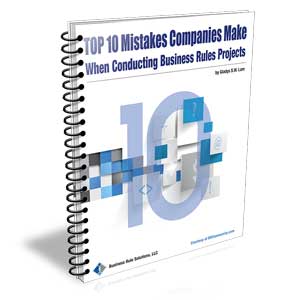Best Practices of Process Management: The Top Ten Principles (Part 4)
Years of successful and not-so-successful process management experience have led to a set of best practices -- a number of fundamental principles that must be honored in order to optimize returns to the company, the delivery of business results to customers, and to satisfy the needs of the organization's other stakeholders.
In this series, I outline the ten principles that underlie the methods of business process operation and change. In this column, I discuss the fourth principle.
Principle 4: The Business Must Be Segmented Along Business Process Lines to Synchronize Change
It's natural to view process as the prime segmentation strategy internal to organizations and -- more and more frequently -- among organizations, since management structures with overly-rigid planning mechanisms are too slow to respond. Seamless cross-functional integration is mandatory.
Restructuring functional units alone won't do it. Only process can stake the claim of achieving enterprise-wide integration because, by definition, a process starts with the first triggering event that initiates action and doesn't end until the results of value are delivered to the appropriate stakeholders. This event/outcome pairing defines the processes that we have. All other structures should be put in place solely to serve the full process and therefore to deliver added value to stakeholders.
This strategy implies that, in deciding how to invest in change, prioritizing along process lines is requisite. In identifying processes that need to be renewed, start with the customers and consumers affected. These processes are referred to as core processes. Look at the customer/consumer life cycle and follow it through.
From the core processes, we can derive the processes that deliver guidance to them (guiding processes) and those that deliver reusable enablers to them (enabling processes). Guiding and enabling processes exist only to support the business objectives that are the target of the core processes and should be assessed in that way.
By segmenting the business along process-value added lines, we have a clear framework for organizing and prioritizing change and for measuring the impact of our efforts in terms that business executives can understand.
References
[1] Roger T. Burlton, "Best Practices of Process Management: The Top Ten Principles (Part 1)," Business Rules Journal, Vol. 7, No. 1 (Jan. 2006), URL: http://www.BRCommunity.com/a2006/b269.html
[2] Roger T. Burlton, "Best Practices of Process Management: The Top Ten Principles (Part 2)," Business Rules Journal, Vol. 7, No. 2 (Feb. 2006), URL: http://www.BRCommunity.com/a2006/b273.html
[3] Roger T. Burlton, "Best Practices of Process Management: The Top Ten Principles (Part 3)," Business Rules Journal, Vol. 7, No. 3 (Mar. 2006), URL: http://www.BRCommunity.com/a2006/b278.html
# # #
About our Contributor:
Online Interactive Training Series
In response to a great many requests, Business Rule Solutions now offers at-a-distance learning options. No travel, no backlogs, no hassles. Same great instructors, but with schedules, content and pricing designed to meet the special needs of busy professionals.












How to Define Business Terms in Plain English: A Primer
How to Use DecisionSpeak™ and Question Charts (Q-Charts™)
Decision Tables - A Primer: How to Use TableSpeak™
Tabulation of Lists in RuleSpeak®: A Primer - Using "The Following" Clause
Business Agility Manifesto
Business Rules Manifesto
Business Motivation Model
Decision Vocabulary
[Download]
[Download]
Semantics of Business Vocabulary and Business Rules